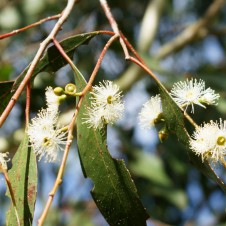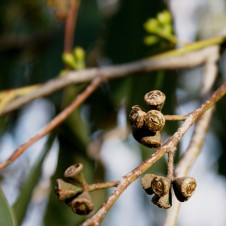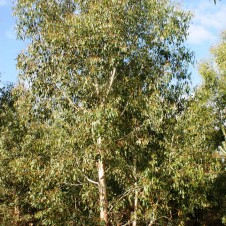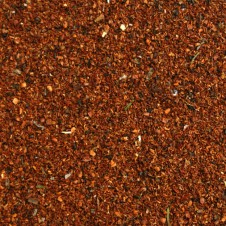General Description: A small, spreading tree to 20 m tall. Trunk branched from near base. Bark fibrous and scaly, persistent to smaller branches.
Flowers and Fruit: White flowers from January to February.Wineglass-shaped fruit on distinct stalks and smaller than those for Swamp Gum. Usually in clusters of 7 with 3 to 4 valves at rim level or slightly protruding.
Conservation: [r] Rare in Victoria. [endemic] Found only in Victoria.
Site Preference and Tolerances: Prefers alluvial flats, river banks and valley bottoms on good soils where rainfall is reasonably high. Frost hardy, tolerant of heavy soils and salt and is fast growing.
Life Span: Long-lived (80+ years)
Wildlife Value: Can provide excellent habitat with many hollows in older trees. Pardalotes and Striated Thornbills love to eat the lerps on eucalypts.
Other Values and Uses: It is quick growingwith a dense wide spreading crown and this makes it a useful shade tree. Excellent for sheltering stock and buildings. Fuel is of moderate value and the timber is generally poor. Useful for erosion control on stream-sides and valleys.
How to tell if it is a Yarra Gum: If you’re really keen to identify a Yarra Gum, grab some leaves and boil them in water for two minutes or soak in boiling water. If it is a Yarra Gum a volatile oil called benzaldehyde will be given off by the process. Some say it smells of a cross between bitter almonds and fish oil but I think it smells like camphor.
Germination Information: Can be propagated easily from seed and will direct seed well if weeds are controlled. Usually germinates in 2-5 weeks.




